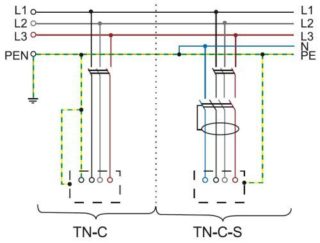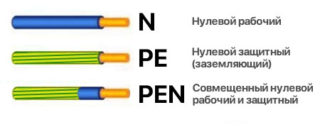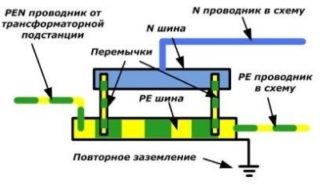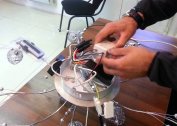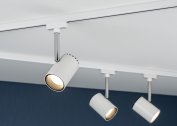Conductors are zero protective and zero workers, each of them has its own purpose, connection method and permissible functional loads in the electrical circuit. Before starting work on creating a protective circuit, it is important to obtain the minimum, but necessary knowledge.
Purpose of conductors
Zero working conductor has another name - network conductor. A load current flows through it. In the diagram, it is indicated by the Latin letter "N".
The main task of the zero protective conductor is to ensure safety. In systems with a zero terminal of a dead-earthed transformer, it commutes the conductive parts of electrical receivers and the zero point of the supply transformer. In emergency or emergency situations, they are under attack.
The following electrical elements are subject to protection from indirect contact (according to PUE 1.7.76):
- cases made of metal, portable and mobile devices;
- metal structures of transformers, electrical machines and lighting devices;
- metal cases of various designs with electrical equipment, cable couplings, trays and various distribution devices;
- steel cases of floor, apartment shields, distribution boards.
As protection, switching of these devices with a grounded neutral in the TN or TT, IT systems is used. The last two are grounded.
Schematically, the neutral conductor is designated “PE”. When the electric circuit is functioning normally, no current flows through PE.
In the diagrams, the combination “PE” means a neutral protective conductor, as well as all protective segments of the circuit, for example, laid busbars and conductors, grounding conductors, individual conductors in cables, and also a wire in the potential equalization system.
The difference between the protective and working conductors
Before starting work, it is important to familiarize yourself with the features and characteristics of the conductors, conduct a comparative analysis.
| Name | Description |
| N - zero working wire | Together with the phase conductor, it takes part in the continuous and unhindered supply of power to household appliances and other electrical appliances. A working current constantly flows through it. |
| RE - zero protective conductor | Does not participate in the provision of electrical appliances and household appliances with electricity. The main task is to protect against indirect interaction in networks with a grounded neutral. |
Zero conductor designation
Most often, the marking of zero protective cores has a yellow-green color. The PUE establishes the basic rules for selecting the cross-section of the current-carrying wire.
PE has its own ground loop, or its main tasks can be assigned and combined with a neutral wire, in this case it all depends on the installed grounding system in a building structure. The union of the two conductors is called PEN, its cross-sectional area must be at least the cross-sectional parameters of the working wire N.
Laying Rules
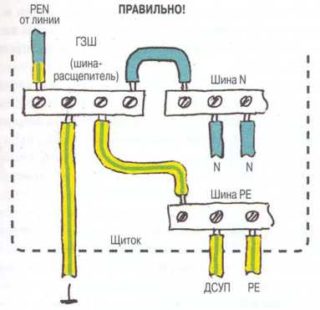 Before proceeding with installation, it is required to familiarize yourself with the rules that are presented for laying PE:
Before proceeding with installation, it is required to familiarize yourself with the rules that are presented for laying PE:
- There should be no devices on the line that could cause disconnection, circuit breakdowns, for example, removable inserts, circuit breakers, circuit breakers and fuses.
- All equipment and live parts are switched directly with protective earth.
- It is forbidden to connect several electrical appliances according to the loop principle.
- A separate terminal (terminal) is allocated on the PE distribution bus. It is forbidden to simultaneously connect the neutral protective and working wires to one terminal.
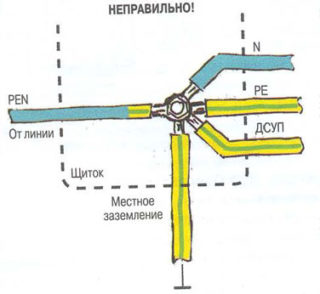
- If the RCD residual current circuit breaker is installed in the switchboard, N and the protective conductor must not have contacts on the same line. If you neglect this rule, the RCD will have many false positives.
- The working wires of the cross-sectional area should be larger than the cross-section of the protective earth.
- Zero protective conductor should be laid near the working wires.
- For grounding, you can not use objects and communications that are not intended for this. Most often in this case, wall fittings, piping and heating radiators are used for other purposes.
- It is forbidden to connect PE to independent grounding buses, if such are provided in the electric circuit.
The resistance of the PE insulation layer should not be less than that specified in the regulatory document.
Types of grounding
Depending on the PE functions, grounding is divided into several types.
Old grounding systems are characterized by the combination of a neutral and protective working wire throughout the network, so they are not equipped with a separate PE. According to the decision of the PUE, from 2017 it is forbidden to operate such systems. When constructing new structures, they resort to safer and more advanced grounding systems.
A characteristic feature of the new types is the implementation of separate circuits for protective and working grounding. It also provides for access to private networks, taking into account all the requirements of independence of N and PE. If we are talking about the TN-C-S system, the combination of these conductors is allowed in private networks.
Electric current carries a potential threat to human health and life. If there is no relevant knowledge and experience, it is recommended to contact a professional electrician. You can find a suitable candidate in the Housing Office, the management company of the city or any construction organization. If it is decided to carry out all the work yourself, before stripping the wires, you need to turn off the power supply to the apartment building, and at the output check the voltage using a special screwdriver equipped with an indicator.

